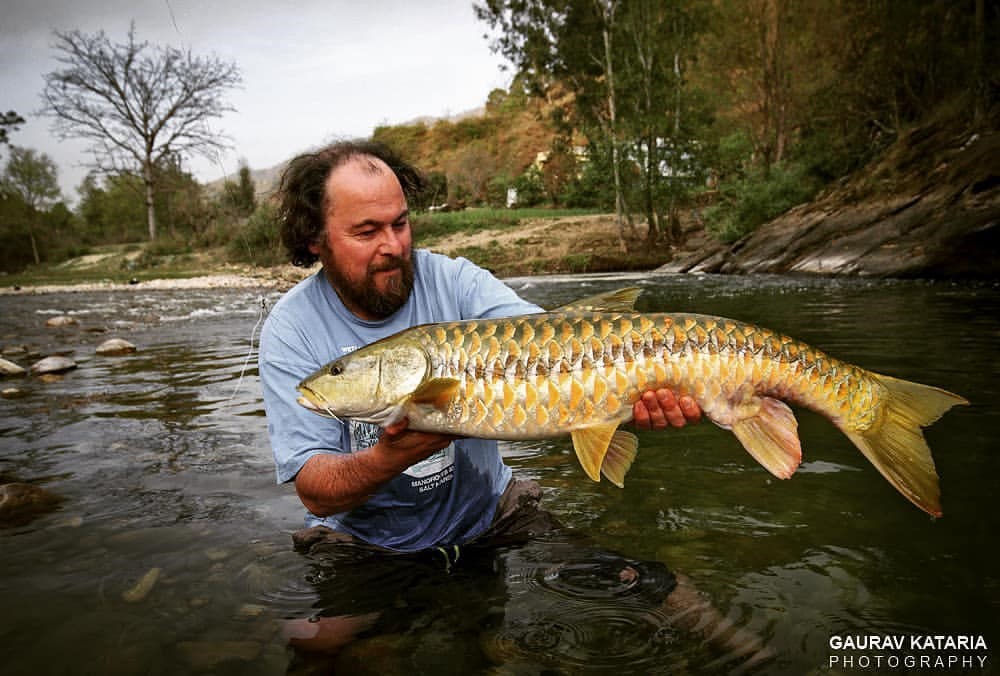 I write this blogpost from Paro, in the outstandingly beautiful kingdom of Bhutan, where I am speaking at the International Mahseer Conference 2018 hosted by the Ministry of Agriculture and supported by a variety of organisations, including the Mahseer Trust. In addition to being part of the International Water Security Network (IWSN), I am also adviser to the Mahseer Trust. Some readers may recall a previous post where I reported back on representing IWSN and the University of the West of England at the Mahseer 2017 International Workshop on Mahseer Conservation in Cochin, Kerala state, India.
I write this blogpost from Paro, in the outstandingly beautiful kingdom of Bhutan, where I am speaking at the International Mahseer Conference 2018 hosted by the Ministry of Agriculture and supported by a variety of organisations, including the Mahseer Trust. In addition to being part of the International Water Security Network (IWSN), I am also adviser to the Mahseer Trust. Some readers may recall a previous post where I reported back on representing IWSN and the University of the West of England at the Mahseer 2017 International Workshop on Mahseer Conservation in Cochin, Kerala state, India.
So what is a mahseer, and why is it pertinent to IWSN interests?
In Hindi, the name महशर, or mahasher, translates to the great (मह or maha) tiger (शर or sher) of the river. Mahseer grow big – the official world record is 120lb – a top predator with a reputation as the world’s hardest fighting sport fish. Different species of mahseer (overlooking considerable taxonomic uncertainties) within the genus Tor occur from Pakistan and India to Nepal, Bhutan, Myanmar, the Mekong basin countries, China and Indonesia.

Uttarakhand state, India. (Image © Gaurav Kataria)
From an IWSN point of view, mahseer are indicators of river health – water quality, habitat diversity and connectivity, unsustainable fishing and other anthropogenic pressures – and hence highly germane to water security.
The substance of my presentation was not so much about fish ecology, though this is a topic of great personal interest. Rather my presentation took the title The multiple roles played by mahseer supporting a diversity of cases for their conservation, an ecosystem services perspective supporting conservation measures for both the fish and the rivers that support them.
Common perceptions of ‘conservation’ can imply, to an untrained public mind, withholding human activities to protect nature for its inherent value. Though this is far from an invalid purpose, it is however far from the full picture. Altruism is anyhow a soft force compared to the political momentum of economic development. Rather, the emphasis of my presentation was on our co-dependence with mahseer and other biodiversity, constituting critical indicators and ‘natural capital’ supplying a huge diversity of ecosystem service benefits flowing to society.
A key emphasis was on the narrow assignment of market costs to capital assets – the market price of a fish, wetland, forest or other resource – as wholly distinct from the multiple ecosystem service values that flow from both the fish and the rivers supporting their populations. A key point is how plural these ecosystem services and associated values are, and how important they are to all policy and societal sectors, ranging from:
- Provisioning: often with a market value, such as fish as food, the aquarist trade, fertiliser and animal feed, etc.;
- Regulatory: generally lacking market values, including roles in pest and disease regulation, carbon cycling, etc.;
- Cultural: generally also lacking market values, in heraldic and religious symbology (the ‘golden fish’, identified as mahseer, are one of eight auspicious symbols of Buddhism), inspiration of literature, music and entertainment; and
- Supporting: beyond the vision of markets, including nutrient and water cycling amongst other roles in ecosystem functioning including their resilience and inherent ‘existence’ values.
So how is this perspective …supporting a diversity of cases for their conservation? All of these values are not only valid but also pertain to cumulative ‘real world’ benefits or costs, whether currently marketed and monetised or not, affected by societal policies, decisions and actions. The status of fish and habitats that support them thereby indicate distributional outcomes for all associated service beneficiaries, and the resilience and continued supply of benefits from river ecosystems.
Is the world serious about its commitment to sustainable development and internalising models such as ecosystem services, expressing tight interdependencies between current and future human wellbeing and the ecosystems that support it? If so, key indicators such as the vitality of mahseer and other fish populations should be a cause for alarm but also guidance on urgent policy reform to safeguard, and ideally to rebuild the foundations of, interlinked economic, social/ethical and environmental consequences.
 Add to this the global commitment to the 17 UN Sustainable Development Goals. One of the greatest contributions of the SDGs, beyond harnessing global consensus, has been to refocus sustainable development on outcomes for human needs. Human needs were explicit in the 1987 ‘Brundtland’ definition of sustainable development, albeit substantially diluted into incremental improvement under subsequent regulatory transposition.
Add to this the global commitment to the 17 UN Sustainable Development Goals. One of the greatest contributions of the SDGs, beyond harnessing global consensus, has been to refocus sustainable development on outcomes for human needs. Human needs were explicit in the 1987 ‘Brundtland’ definition of sustainable development, albeit substantially diluted into incremental improvement under subsequent regulatory transposition.
Freshwater systems supporting mahseer and other fish populations are foundational resources, playing a diversity of direct, indirect or supporting roles in meeting all of the highly interconnected SDGs. As a global society, we need to take on this challenge seriously for our own wellbeing, as well as to safeguard the inherent values of the fish.
